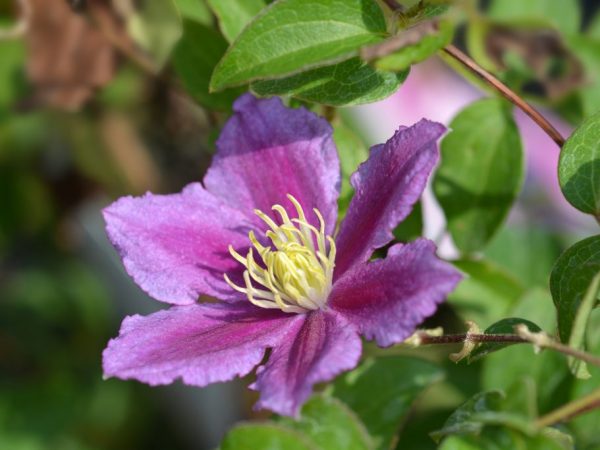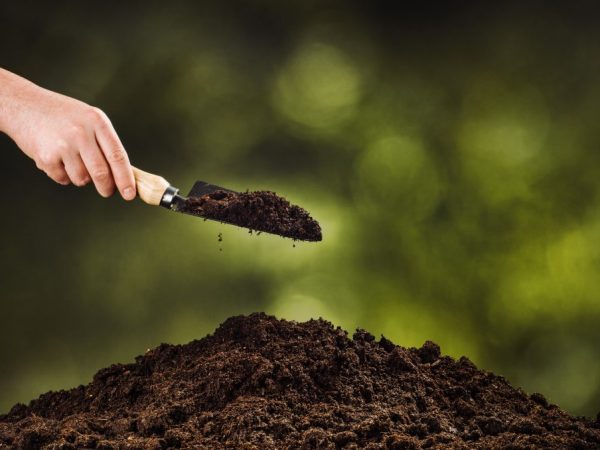Transplanting clematis to another place
In landscape design, the technique of vertical gardening is popular. It allows you to effectively decorate the site. But for this purpose, only special types of plants are suitable. This is clematis. It is unpretentious to conditions and care and even a novice gardener can grow it. For the plant to bloom for a long time, the correct transplant of clematis is important.

Transplanting clematis in the fall
Choosing a place for transfer
In order for the plant to take root, it is important to choose the right timing for transplanting clematis and the place. They grow well on the south side of the site. This plant loves light, so it should be in direct sunlight for at least 6-7 hours a day. In this case, the bush will grow rapidly and bloom for a long time.
This rule applies to most species, but there are some exceptions, for example, Knyazhiki. This is a plant with large flowers, the bush of which blooms twice a season. It also has good frost resistance and the ability to grow even in poor lighting.
Any type of soil is suitable for clematis, except for marshy. It is important that the landing site be on a hill, then in the spring it will not be flooded by melt water.
Transfer time
The timing of transplanting clematis depends on the climate in which the bush grows. In the southern regions and the middle lane, planting is carried out in the fall. The winter in these territories is not too cold and the autumn transplant makes it possible to take root well in a new place and the next summer it blooms profusely.
In the northern regions, it is better to replant the bush in the spring, in mid or late April, and also in early May. The bush does not bloom the first summer after transplanting, but it can survive the cold winter.
The best option is to transplant clematis to another place in the fall, in the first or second month. In colder regions, a transplant is carried out in the summer, in August, so that the roots have time to get stronger before the onset of cold weather.
Site preparation
This plant is classified as climbing, so it is necessary to build a support for it before replanting. Usually, decorative trellises are installed for this, but clematis shoots are very strong and tenacious, therefore they are able to wrap around any support.
In winter, the branches must be removed from the support, otherwise they will die. Sometimes this is difficult to do because the stems are overgrowing.
Rules for transplanting clematis in the fall:
- if the support has a complex curled shape, it is worth taking species that need pruning in the fall;
- do not grow clematis near buildings with sloping roofs - they can be damaged by running water.
- the distance between plants should be at least 1.5-2 m;
- the optimal groundwater level should not exceed 1.3 m.
When transplanting in the fall, it is important that the roots of the plant can take root faster and the clematis begins to bush. You also need to dig a hole. If the soil is heavy and clayey, then a nutrient mixture is taken to fill the hole. For its preparation use:
- peat;
- sand;
- humus;
- turf mixture.
Before transplanting the plant into the soil to another place, add a little ash, as well as a glass of lime or mineral fertilizer.Clematis has a root collar; it is recommended to cover it not with earth, but with a mixture of ash and sand.

When transplanting clematis, a little ash is added to the soil
Pit preparation
A pit for transplanting clematis is prepared in advance. Its depth should be at least 60 cm deep and 50 cm wide. A drainage layer 10-15 cm thick is laid at the bottom of the hole.
To do this, use:
- crushed stone;
- pebbles;
- chipped brick.
Then it is filled with prepared soil from equal parts of sand and peat. You should also add organic matter to the mixture to improve plant nutrition, and 2 parts of the soil. You cannot use the earth that was taken out of the pit, it is better to purchase a special garden mixture. By mixing the components, about 185 g of dolomite powder is added to each well.
Also, do not use fresh manure because it can burn the roots. Pits filled with the mixture, leave so for a while.
Transplant process
A young bush tolerates the process of transplanting from one site to another better than an adult. It is important to carefully remove the roots without damaging them. Older bushes are more difficult to replant, so care must be taken during the process. Clematis, which are more than 5-6 years old, are not recommended to be transferred to a new place. They have strong, long roots that are difficult not to damage.
To transplant a bush you need:
- dig in branches to a depth of not less than 35-45 cm;
- cut off shoots at the level of 2-3 buds;
- carefully lift the roots and move to a new place.
When planting in a new hole, the root collar of the bush is deepened by 10 cm, and then thoroughly watered with settled water. After the flower takes root, you can plant low ornamental plants around it. They will create the necessary shade for the roots, because sunlight is only good for the top of the plant.
Post-transplant care
After transplanting clematis to a new place, it is necessary to water and loosen the soil. You can't feed it too often during this period, because the roots will begin to rot and the plant will die.
For feeding, you can use a solution of copper sulfate and Strawberry concentrate. Damp weather the soil at the base is sprinkled with ash, this will protect the bush from decay.
Sometimes, during an autumn transplant, clematis can suffer from a lack of moisture. To prevent this, the soil is mulched with humus or moss.
Conclusion
Clematis is a beautiful ornamental plant that is not whimsical to care for. It is only important to maintain an optimal moisture level, prevent waterlogging of the soil and feed.
Sometimes it becomes necessary to transplant clematis. Autumn transplanting is not difficult, but it is important not to damage the roots, especially if the bush is mature. It is also necessary to prepare the well in advance for disembarkation.


